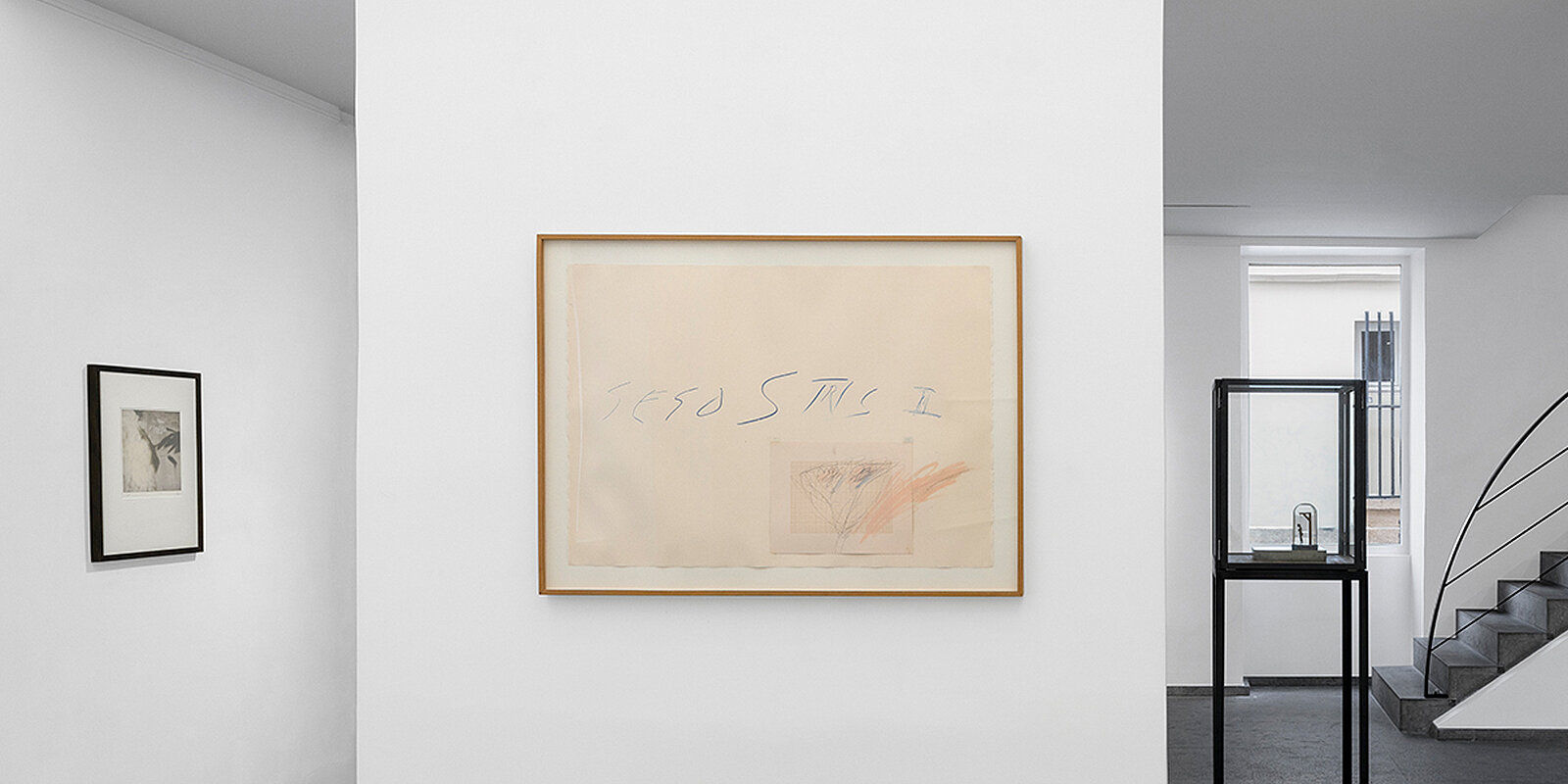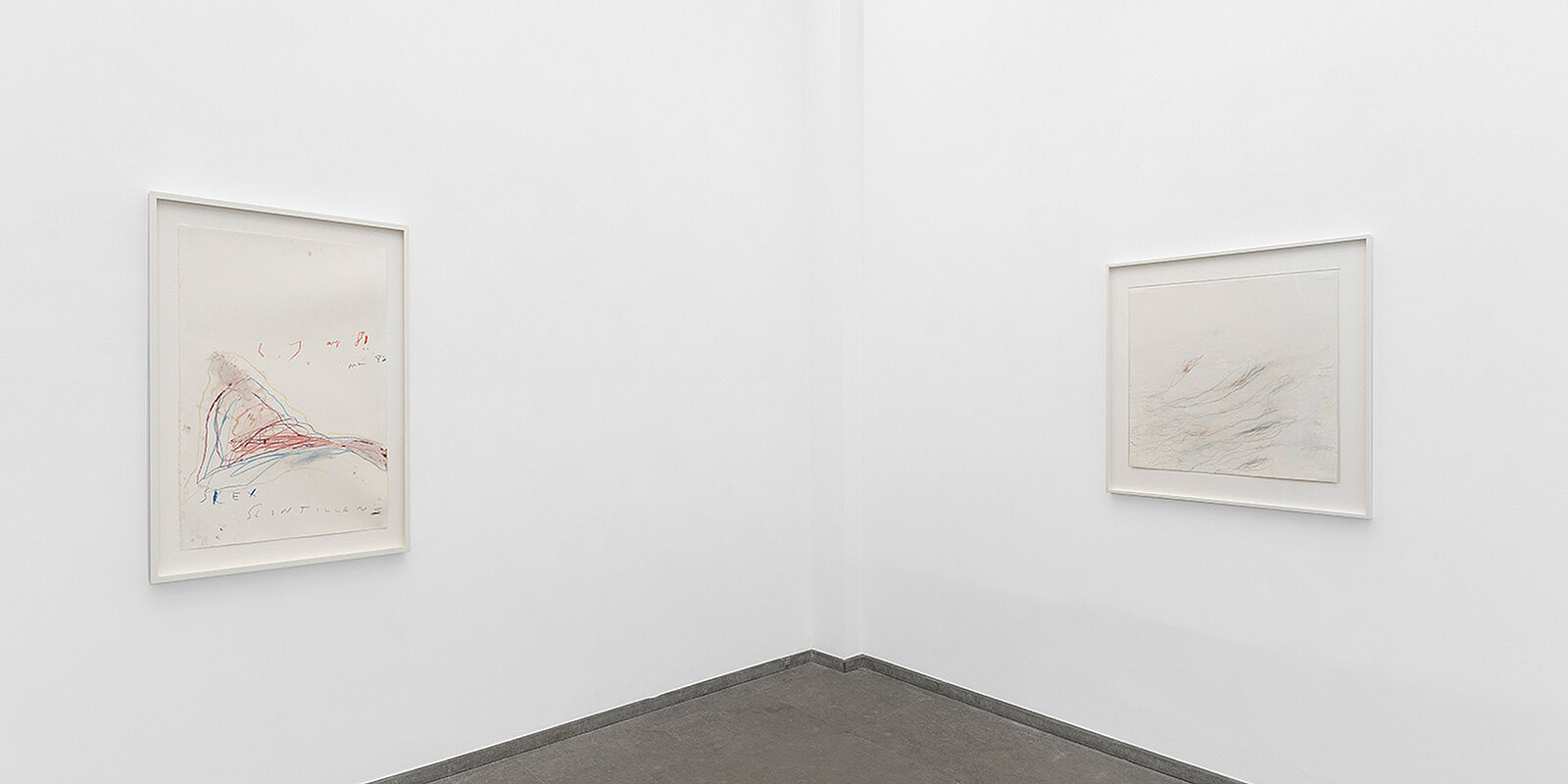Accrochage

Galerie Karsten Greve Paris - Côté rue
Tuesday to Saturday, 10 am - 7 pm
Louise Bourgeois (1911 - 2010) is known for her monumental sculptures and installations, such as her work Maman, representing a ten-metre-high spider, first exhibited at London's Tate Modern in 2000. Her work is characterised by a personal and autobiographical language, exploring themes of sexuality, the body, relationships between people, the family and motherhood. With her "Janus" series, developed in four variations, Louise Bourgeois evokes the god with two faces, and questions the metamorphosis of bodies, the logic of identity between masculine and feminine, and the polarity present in every being. Her highly evocative work The Suicide (1998) refers to an intimate experience. The artist herself attempted suicide when she lost her mother in her twenties. This is a unique evocation of that episode, confronting the viewer with death in a violent, raw simplicity that is characteristic of her work.
In 1956, at the age of twenty, Jannis Kounellis (1936 - 2017) left his native country, Greece and moved to Rome. As a leading figure of the Italian art movement Arte Povera, Kounellis's work had a lasting impact on artistic practices in painting, sculpture, performance, and installation. His diverse attempts to broaden the horizons of Expressionism contributed to the creation of a genre distinctly his own. His work addresses memory, history, language, migration, and human relationships in an effort to unify life and art. The canvas collage dating from 1961 is typical of Kounellis’ early works. It features simple signs such as the arrow or the cross, framing a chessboard collage. The simplicity of the means employed, in terms of both colours and materials, already heralded the path that Kounellis would take at the end of the 60s, towards Arte Povera.
David Smith (1906 - 1965) was one of the most important American sculptors of the 20th century. Drawing, like welding, played a central role in the development of his art, influencing his vision of sculpture and opening up new perspectives, allowing him to detach himself from the physical contingencies and labour imposed by this practice. In this exploration of different media, David Smith draws on his own creative process: before assembling his sculptures, he would place elements of the work on the floor of his studio; the solder would then burn the floor, leaving accidental patterns. It was by taking inspiration from these involuntary forms that he began work on the "Sprays" series, to which the work Untitled (1963) presented here belongs. He used all the materials at his disposal, from machine parts to tree branches, and even the remains of his table, which he laid out on paper or canvas before spraying the composition with industrial paint. In this way, the artist, influenced by his early years working in a car factory, reappropriated techniques deeply linked to mechanics and industry.
The works of Cy Twombly (1928-2011) straddle the line between drawing and speech, to the point where the boundary between the two becomes vague before disappearing altogether. In his search for an immediate and intuitive visual language, the artist creates works with abstract compositions that conceal an expressive awareness that is absolutely touching. Words and texts, especially the fragmented and grandiose ones of ancient poetry, are integrated into the surface of the work through the letters and spontaneous signs of gestural calligraphy. The drawn word thus becomes the sign pronouncing the word. The elements of language found in his various series reveal mythological and poetic references. Cy Twombly travelled around the Mediterranean basin at a very early age, immersing himself in the ancient culture that punctuated his drawings. In this way, the artist played with abstraction, which he never fully achieved, summoning up the primitive force of a past that fascinated him, to the extent that he set up his studio in ancestral Italy.
Pierre Soulages (1919 - 2022) is recognised as a master of abstraction, the painter of black and light. Since 1979 he has devoted himself exclusively to his Outrenoirs. This is how he describes his mostly monochrome paintings, in which black is merely a means of creating pure light, a black that goes "beyond black". The search for the absolute in painting, for the essence of the creative act, makes any title superfluous; this is why Soulages has always titled his works with the assertive word "Peinture", followed by the size of the canvas and the date of production. Using tools that he makes himself, he applies different layers of material, which he works to create smooth or deeply striated areas. The refraction of light on the matt or glossy texture of the paint makes the surface of his paintings vibrate, offering the viewer an infinite spectacle.
Fragile hanging installations by Claire Morgan (1980…) reflect an interest in natural processes and organic materials. In her works, she engages with the elemental conditions of humans within their habitat and reveals the impossibility of grasping the complexity of life and death. Elegance and beauty, but also senselessness and horror, are present in her installations and drawings. Simultaneously poetic and vexing, they express the ambivalence of life. In her words: Exploring the physicality of animals, death, and illusions of permanence in the work is my way of trying to come to terms with these things myself.
Joel Shapiro (1941-...) uses the emblematic materials of modern sculpture - wood, plaster and bronze - to explore the possibilities of form. Reminiscent of the tradition of maquettes, he uses this technique to create small, dynamic studies based on the assembly of blocks, assembled according to pre-existing angles and fractures that shape the final result and guide the artist's hand in defining a new sculptural concept. For the artist, it is important to leave traces of the creative process visible: glue, nails, joints, the grain of the wood. He carries his exploration of form on paper too: his charcoal works are in close relation with his sculptures: “I was making drawings; then, looking at them, I decided they could function sculpturally:” The geometry of these simple forms have brought Joël Shapiro's sculptures closer to Minimalism. However, the place given to man and the place given to imperfections of manual labour distance his approach from Minimalist artists (Carl Andre, Donald Judd), who instead favour smooth materials in which the trace of man´s work is erased.
Kathleen Jacobs (1958...) developed her unique rubbing technique, which transfers the imprints of tree bark onto the canvas, inspired by the woodblock printing technique developed by Japanese-American artist Hiroki Morinoue. This ritual-like creative process, which lies at the heart of his entire practice, consists of vertically wrapping and stapling linen canvases of different sizes around meticulously selected tree trunks or branches. The artist begins by rubbing a piece of canvas, previously coated with pigments and oil paint, up and down the surface of the canvas, to capture the natural textures and contours of the bark. The canvases remain in place for several months, up to three years. developed a unique, collaborative creative process with multiple players: time, nature, trees, their bark and, finally, the artist, with her methods, materials and tools. She emphasises the unifying stream that connects nature: “for me, trees are a template for the law of nature (…) I realized that the lines and patterns of the bark were very similar to forms found in nature. Clouds in the sky, waves in the ocean, flowing rivers ..”.
Georgia Russell (1974 -...) works with surgical precision, turning the scalpel from its medical function into an artistic tool: I cut, I lacerate the paper and I play with the gradations of tones, punctuated by the movement of my incisions through which the light seeps in, the artist says of her work. With their flamboyant and tactile surfaces, her works seem to embody the permeability of matter. The slits in Russell’s canvases can be seen as portals to other universes, cells for the passage of air and light. In the painting Undercurrent (2019), the different layers of cut canvas seem to intertwine in a vibrant kineticism. In her cut books, Georgia Russell offers a new identity to the objects she uses. She chooses her books for their evocative power. She dissects and transforms them by cutting them open with a scalpel. Both objects and images, they become a link between past and present. With books, I express the minds they have passed through, and the knowledge they have shared. The book becomes a sculpture, a shared experience.





